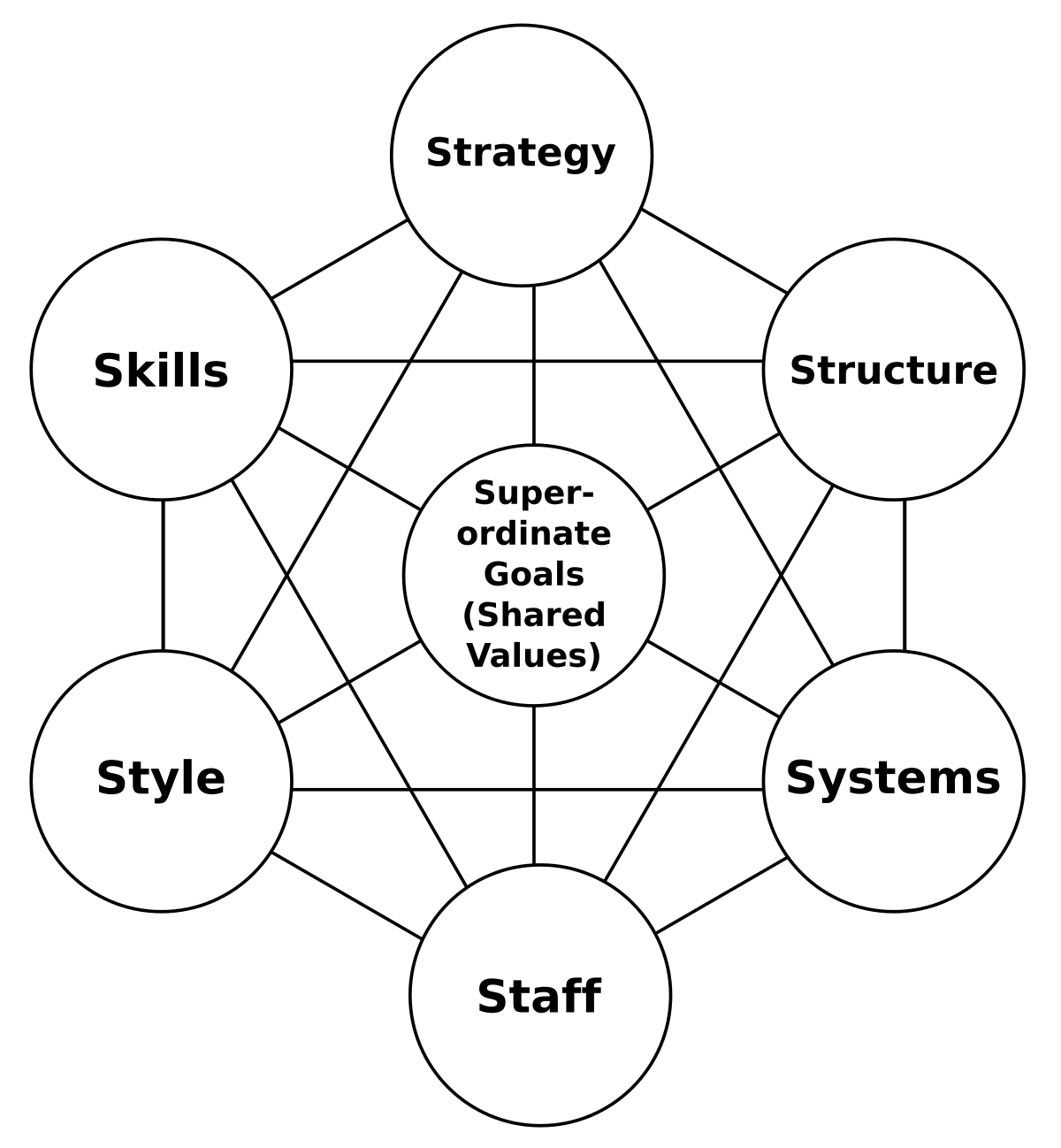Change management models are concepts, theories, and methodologies that provide an in-depth approach to organisational change. They provide a guide to deliver changes, navigate the transformation process, and embed change into daily operations.
Any change is all about people, people’s behavior, and business process, each model focuses on different lenses of change approaches and analysis. Some models are better for large-scale, small, and medium-scale, organisation-wide changes, which results in a simple or complex one.
Because a change project requests a change in people’s behaviors, it is not an easy and time-consuming, effort-needed. During my work projects, I shortlist a few models that serve as systematic approaches to trigger changes. They have been proven to be popular and effective. Generally speaking, they facilitate activation by foreseeing obstacles during that process. These change management models include:
- 7-S Framework by McKinsey
- ADKAR: Change management model
- Kubler-Ross: Change curve
- Kotte’s theory

7-S framework by McKinsey
This model was introduced in the book In Search of Excellence, by former McKinsey consultants Thomas J.Peters and Robert H. Waterman, in the late 1970s. The framework maps a constellation of interrelated factors that influence an organisation’s ability to change. The lack of hierarchy among these factors suggests that significant progress in one part of the organisation will be difficult without working on the others.
Some 30 years later, 7-S still matters to visualise the complexity of organisations. The framework endorses simplicity and is easy to remember.
Those seven elements are divided into two groups: hard S’s and soft S’s.
Firstly, the hard elements:
The hard elements are feasible and easy to identify. They can be found in strategy statements, corporate plans, organisational charts, and other documentation.
Strategy: the plan in response to changes in its external environment. It is a clear goal that the company needs to obtain competitive advantages over rivals. Therefore, the strategy requires specific dynamics because marketing changes quickly.
Structure: It is the corporate hierarchy, the chain of command, and outlines the responsibilities of a member in that hierarchy and how staff receive tasks, and to whom they report.
To me, with the dominance of SaaS platforms, the border between structure and systems is fading. However, the structure of a company has become more complex as people find it more confusing. They will receive and report tasks through channels and to more functional managers.
Systems:
Nowadays they are widely known as an electronic system. Nevertheless, in the past, they were daily procedures, workflow, and decisions that make up the standard operations within the organisation. Now it matters especially with the advent of customer relationship management like Salesforces, for instance, and other HR SaaS platforms
Secondly, the soft elements:
The four soft S’s, however, are hardly feasible. They are difficult to describe since capabilities, values, and elements of corporate culture are continuously developing and changing from time to time. They are highly determined by the people in the organisation. Therefore, it is much more difficult to plan or influence the characteristics of the soft elements.
Skills: refers to institutional skills and personal skills that make up the way they work together. During the diagnosis, the company will find out capabilities that they don’t have. For change projects, skills become more and more important as with all changing innovation and market demands in the last 25 years, companies need to update their broader and deeper skills to sustain their competitiveness. They can consider outsourcing if they cannot manage to acquire them
Staff: refers to the number of people and the way managers manage and boost performance with more diverse and changing human resource management. The identity of staff keeps changing. Any time obstacles how to recruit, retain and develop staff is a hot topic when the company is under the pressure of changing targets.
Styles: comprises corporate culture, the dominant values, beliefs, and norms that develop over time and become enduring features of one organisation’s life. Or it can be the leadership style that changes in response to leadership transition. Once it is about leadership style, it is difficult to assess because of the conflict of management styles.
Shared values: In the center of the framework, shared values are the commonly accepted standards and norms within the company. They should exert an influential effect on insiders and outsiders – simple but stated at the abstract level and hardly change over time.
To me, the appearance of innovation and technologies has blurred the border between elements of the model. However, this model structure: hard S’s and soft S’s still benefits any change managers to form and prepare for a plan. To deliver changes effectively, managers need to consider other factors and models, 7-S framework by McKinsey is not enough. Or at least a solid understanding of HR theories and platforms, operation models will support for smoother transitions, I think.
Norwich, September 2022
Kate N.
Source:
Enduring Ideas: The 7-S Framework – McKindsey
Peters, Thomas J. and Waterman, Robert H. – 2015 – In Search of Excellence by Profile Books